What are the deepest caves in the world? Well, as experienced cavers and speleologists (scientists who study caves) continue to explore each year, they discover new cave passages that often go even deeper than what they originally thought. In fact, the record for “deepest cave in the world” has changed several times just in the past few years! Perhaps there are even more caverns and parts of these caves to be discovered in the future, but for now, let’s look at the 10 deepest caves known in the world today.
10. Sistema Huautla – 5,118 feet (1,560 meters)
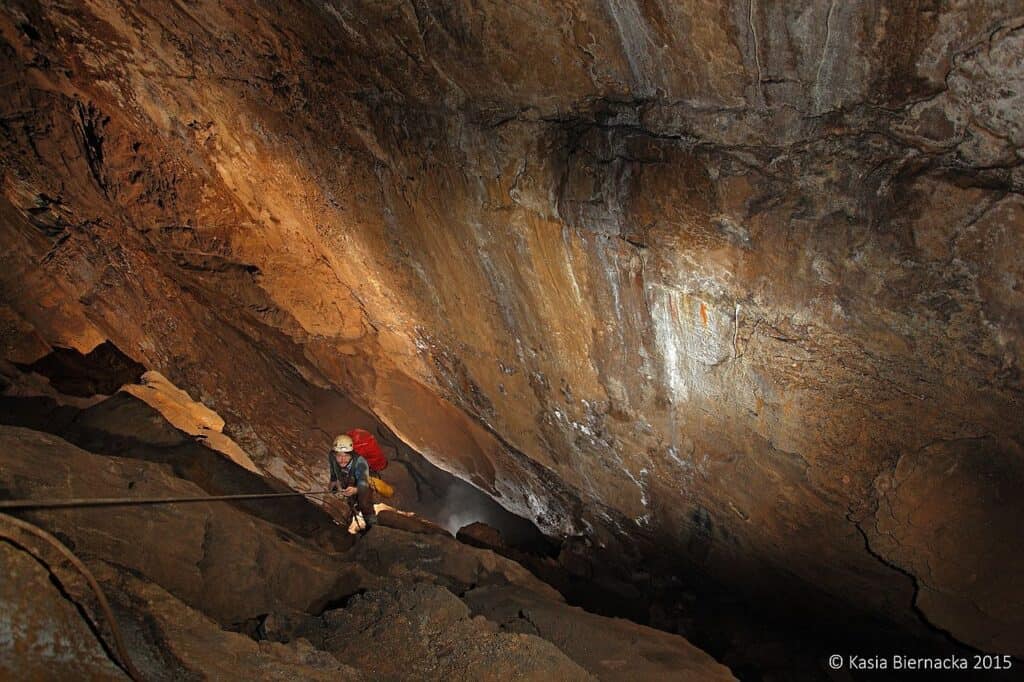
Sistema Huautla is the deepest cave in the western hemisphere
©Kasia Biernacka / Creative Commons – License
The Sistema Huautla is the tenth deepest cave in the world, located within the Sierra Mazateca Mountains in Oaxaca, Mexico. This cave is the deepest cave we know of in the western hemisphere, measuring 5,118 feet deep. The Sistema Huautla is full of exciting discoveries, like lakes and pools inside the cave. There are even underground rivers and waterfalls over 300 feet tall!
9. Hirlatzhöhle – 5,120 feet (1,560.5 meters)
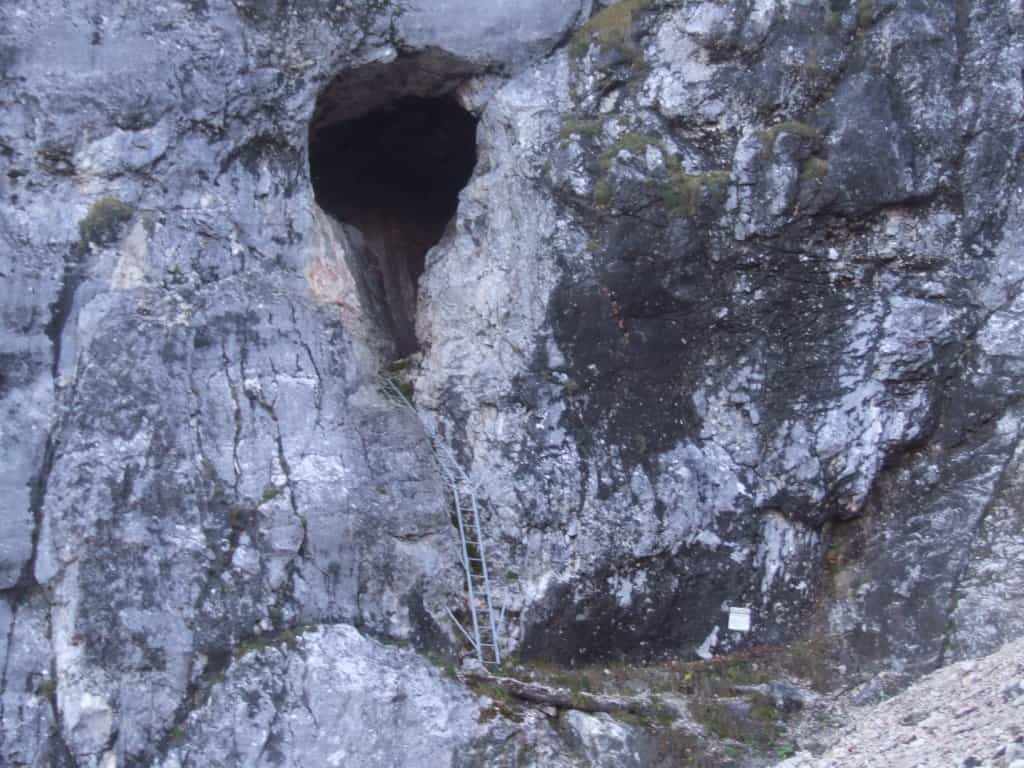
The Hirlatzhöhle was discovered by Karl Pilz in 1949
©Benedikt Hallinger / Creative Commons – License
The Hirlatzhöhle is 5,120 feet deep, making it the second deepest cave in Austria and the ninth deepest cave in the world. It is at least 70 miles long and is the third longest cave in Austria. The Hirlatzhöhle is a karst or limestone cave with 6 different entrances. Only experienced cave divers can access three of these entrances, since you must swim underwater to enter them! The Hirlatzhöhle Cave was discovered in 1949 and in 1971 it was named as a protected natural monument.
8. Torca del Cerro del Cuevón – 5,213 feet (1,589 meters)
The Torca del Cerro del Cuevón is the deepest cave in Spain and the eighth deepest cave in the world. It is located in the Picos de Europa mountain range and is 5,213 feet deep. Descents into the Torca de Cerro del Cuevón are some of the most difficult in the entire world, even for the most experienced cavers.
7. Gouffre Jean-Bernard – 5,686 feet (1,733 meters)
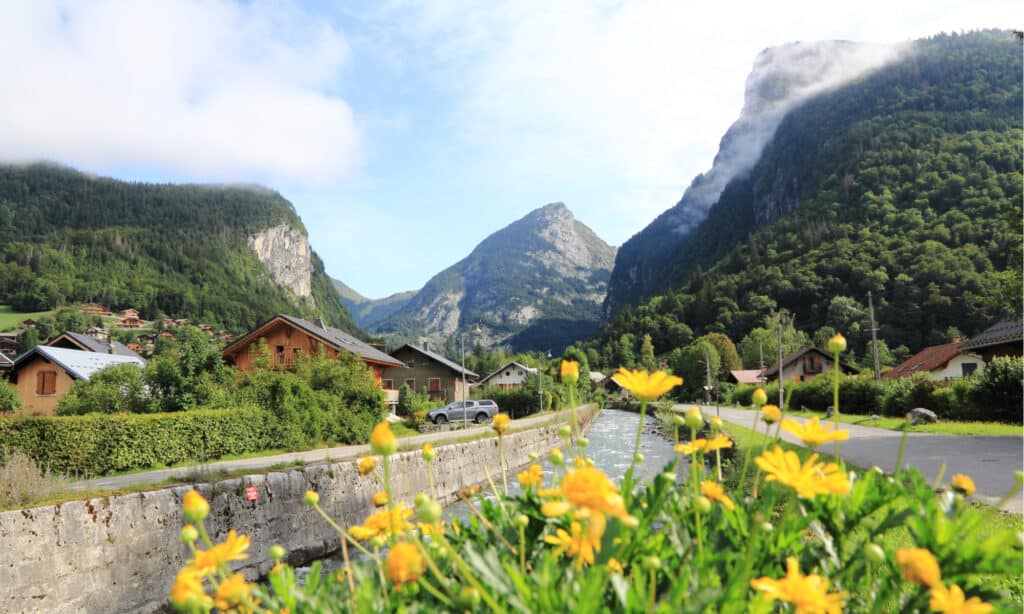
A view of the Alps of Samoëns.
©LENS-68/Shutterstock.com
The Gouffre Jean-Bernard Cave in the Alps of Samoëns, France, is the seventh deepest cave in the world, measuring 5,686 feet deep. The first entrance to the cave was discovered by a French caving group (the Groupe Vulcain) in 1963. Today, the cave has at least 13 known entrances. Groupe Vulcain continues to explore the Gouffre Jean-Bernard Cave, which was named in memory of two of their members.
6. Gouffre Mirolda – 5,692 feet (1,735 meters)
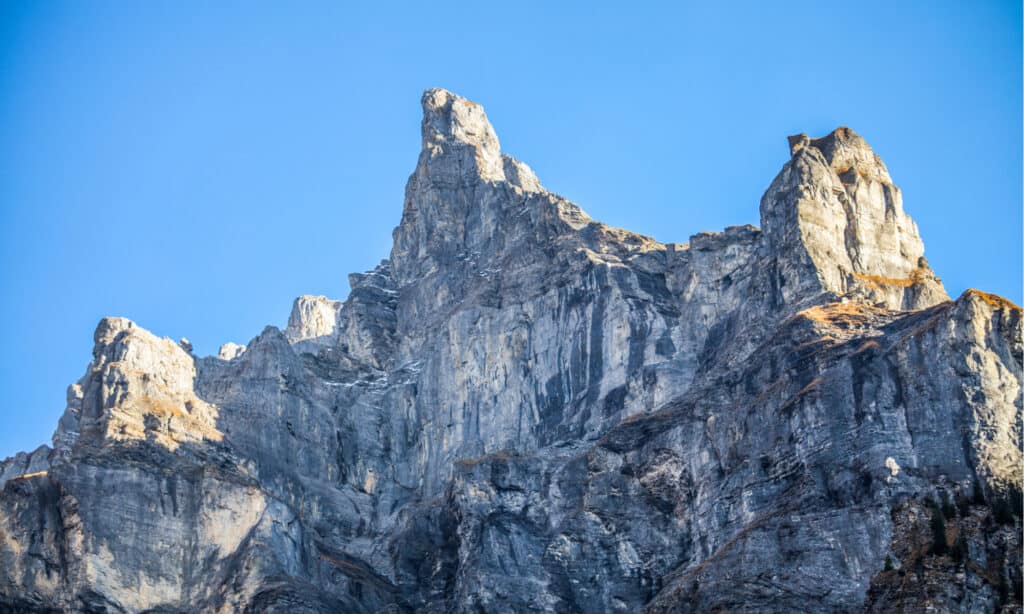
The Gouffre Mirolda Cave is located in the Haut-Giffre Mountain Range.
©MAHATHIR MOHD YASIN/Shutterstock.com
The Gouffre Mirolda Cave in France is 5,692 feet deep, making it the sixth deepest cave in the world. This is a karstic or limestone cave with underground drainage systems. The cave is in the Haut-Giffre Mountain Range near the village of Samoëns. A shepherd accidentally discovered the Gouffre Mirolda Cave in 1971. It was considered the deepest cave in the world for just over a year until the Krubera-Voronya claimed that record.
5. Lamprechtsofen – 5,354 feet (1,632 meters)

Lamprechtsofen gets its name from the legend of Knight Lamprecht and his lost treasure, supposedly buried somewhere inside the cave
©Sebastian Grünwald / Creative Commons – License
The Lamprechtsofen Cave in Austria is 32 miles long and 5,354 feet deep, making it the fifth deepest cave in the world. It is a karst or limestone river cave that has captivated humans for several hundred years.. There is an old legend about this cave about a knight from the crusades who gave his treasure to his daughters, one of which hid it somewhere inside the cave. This legend became so popular that in 1701 the cave had to be closed off to keep treasure hunters out. Today, 230 feet of the Lamprechtsofen Cave is open as a “show cave” for the public to visit.
4. Snezhnaya– 5,775 feet (1760 meters)
The Snezhnaya is currently the fourth deepest cave in the world, measuring 5,775 feet deep in Abkhazia (a breakaway region of Georgia). It is part of the Snezhnaya-Mezhennogo-Illyuziya underground water system, a series of branching cave channels with underground water streams. “Snezh” means “snow” in Russia, so the cave’s name literally means “snow cave.”
3. Sarma Cave – 6,004 feet (1830 meters)
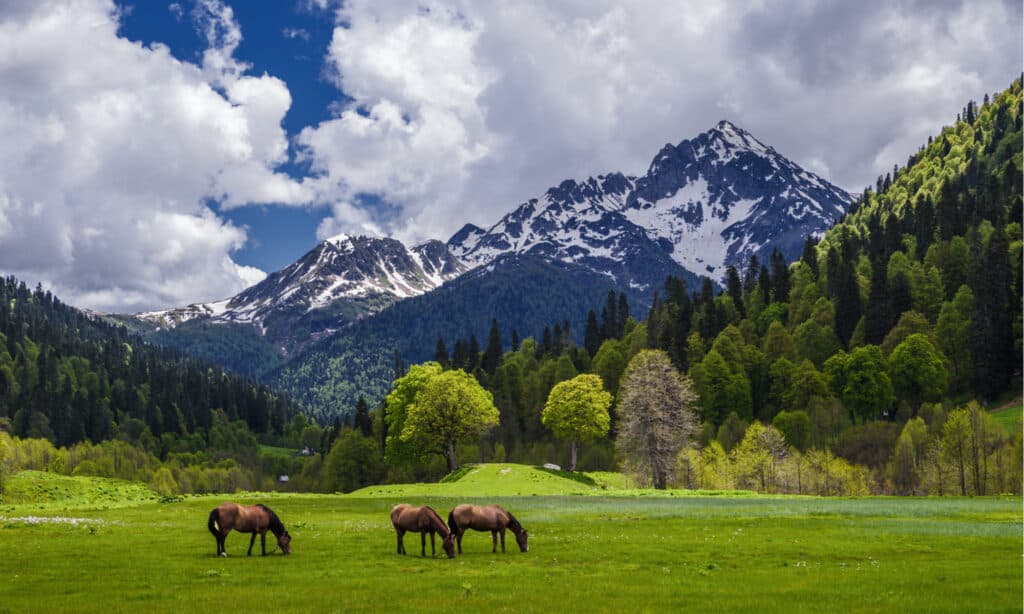
Sarma Cave was last measured in 2012 by Pavel Rudko and his team.
©Egoreichenkov Evgenii/Shutterstock.com
The Sarma Cave is in the Gagra District in Abkhazia. It was last measured in 2012 as 6,004 feet deep. The Sarma Cave is a more recently discovered cave, first recorded in 1990. There are at least three levels in this cave with many halls, tunnels, and passageways. Some scientists believe this cave could be much deeper than what they’ve seen so far, perhaps even deeper than 6,500 feet.
2. Krubera-Voronya Cave – 7,215 feet (2,199 meters)

The Krubera-Voronya Cave is home to over 12 arthropod species like springtails, spiders, and pseudoscorpions
©Yuri Kasyan / Creative Commons – License
The Krubera-Voronya Cave in Abkhazia is the second deepest cave in the world, measuring 7,215 feet deep. This cave is also located in Abkhazia, near the Black Sea. It claimed the record for the deepest cave in the world in 2001 and held that record until 2018. The cave was originally named for Alexander Kruber, a Russian geographer. However, a group of speleogists observed several crows nesting in the entrance pit of the cave, so they nicknamed the cave “Voronya” or “Crows’ Cave.”
There are many astounding natural elements in the Krubera-Voronya Cave. The bottom isn’t dry; it’s a water-filled basin of sorts, and they even found a frozen waterfall within the cave! This cave is one of the most challenging for cavers. It has even been referred to as an “inverted Mount Everest.” The Krubera-Voronya is home to one of the deepest land animals on earth, Plutomurus ortobalanganesis. This wingless insect lives an astonishing 6,500 feet below the entrance of the Krubera-Voronya Cave.
1. Veryovkina or Verëvkina Cave 7,257 feet (2,212 meters)
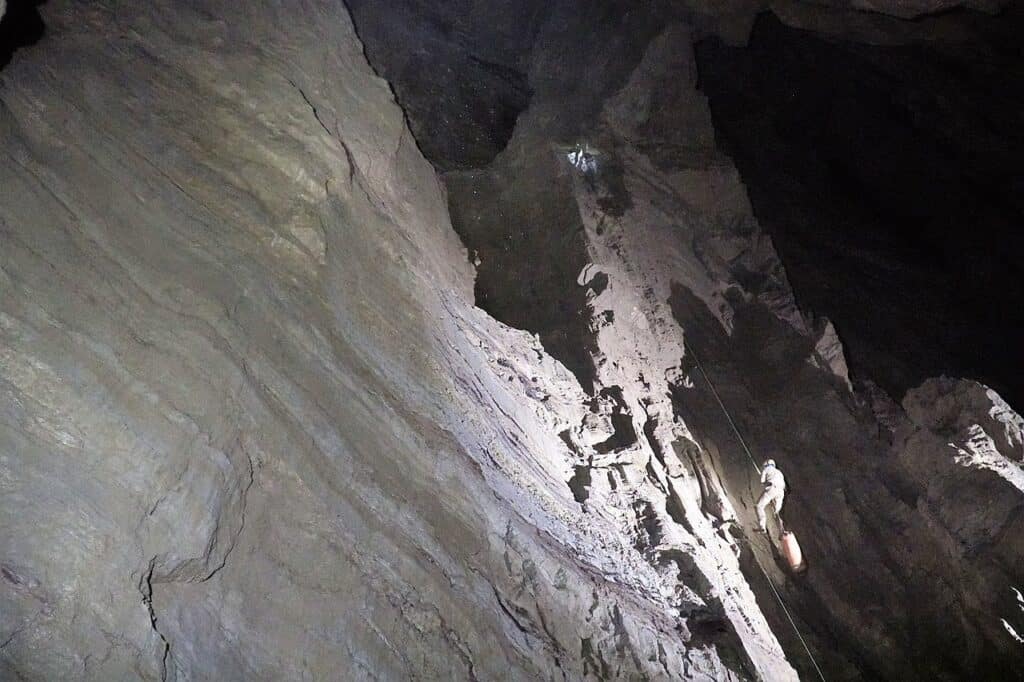
The Veryovkina Cave is located near the Krubera-Voronya Cave (the second deepest cave in the world)
©Petr Lyubimov / Creative Commons – License
The Veryovkina Cave is the deepest cave on earth, measuring 7,257 feet deep. The cave claimed this record in 2018, when a group of Moscow speleologists made the record-setting descent. Traveling down into the cave’s current depth and back to the surface again takes at least one entire week. The Veryovkina Cave is located in Abkhazia, between the Fortress and Umbrella Mountains. This limestone cave was first discovered in 1968 but was largely unknown until a speleology club from Moscow found it again in 1982. The Veryovkina or Verëvkina Cave was named after Alexander Verëvkina, a cave diver who died in 1983. This record-breaking cave is the is the fourth and final cave on this list located in Abkhazia.
The photo featured at the top of this post is © Pfj2784 / Creative Commons – License / Original
FAQs (Frequently Asked Questions)
What is the largest cave in terms of volume?
The largest cave in the world in terms of volume is named Son Doong. Incredibly, it was just discovered in 2009 and is in Vietnam. As of 2022, its believed the cave has 1.35 billion cubic feet of space, but estimates may continue to rise in the future.
Thank you for reading! Have some feedback for us? Contact the AZ Animals editorial team.






